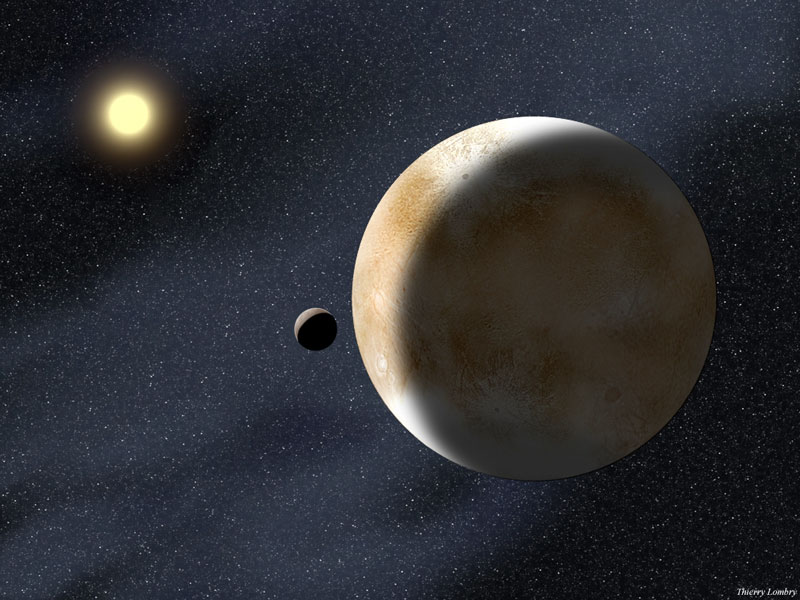[/caption]
In 2003, a celestial object was discovered, but little did astronomers know that this object, which was designated 2003ub313, was going to change astronomy forever. Although the object was first photographed in 2003 by Mike Brown and other astronomers, it was not until 2005 that astronomers announced their discovery. You may better know 2003 ub 313, which was its designation given when it was believed to be a minor planet, as Eris. Eris made such a fuss because it is larger than Pluto – 27% more massive. Some people labeled it as the tenth planet while others did not think it should join the ranks of the nine planets we had. Finally, the International Astronomical Union (IAU) met to decide on a definition of a planet. Eventually, they decided on a definition in 2006, and 2003ub313 was not classified as a planet but rather a dwarf planet. In addition to Eris, Pluto was reclassified as a dwarf planet, and several other celestial bodies – including Ceres, Haumea, and Makemake – were classified as dwarf planets. Astronomers are evaluating dozens more celestial bodies to see whether they fall under the classification of dwarf planets.
Eris is the ninth largest celestial body in our Solar System that orbits the Sun and the most distant object orbiting the Sun. It takes the dwarf planet 556.7 years to orbit our star. Eris is located in the scattered disc, which is a region beyond the Kuiper Belt. In addition to being a dwarf planet, Eris is also classified as a Trans-Neptunian Object (TNO). The surface of the dwarf planet is grey, and astronomers believe that the surface is covered with methane ice, which is what causes it to appear grey. Methane is the same substance that makes Uranus and Neptune blue. Scientists think that Eris’ composition is similar to that of Pluto. Eris also has a very eccentric orbit, and it is also highly inclined. At some point in its orbit, Eris will actually be closer to the Sun than Pluto will be.
Like most celestial bodies, Eris was named after a figure in mythology. Eris was the Greek goddess of strife and discourse. Many believe this is a very fitting name for the dwarf planet, which caused so much division over the definition of a planet and the fate of Pluto. The dwarf planet Eris also has a moon, which was named Dysnomia. Dysnomia was Eris’ daughter in Greek mythology and the demon of lawlessness.
Universe Today has articles on Eris including dwarf planet Eris and plutoid Eris is changing.
For more information, check out the discovery of Eris and former 10th planet officially named Eris.
Astronomy Cast has an episode on Pluto’s planetary crisis you will want to hear.
Source: NASA

